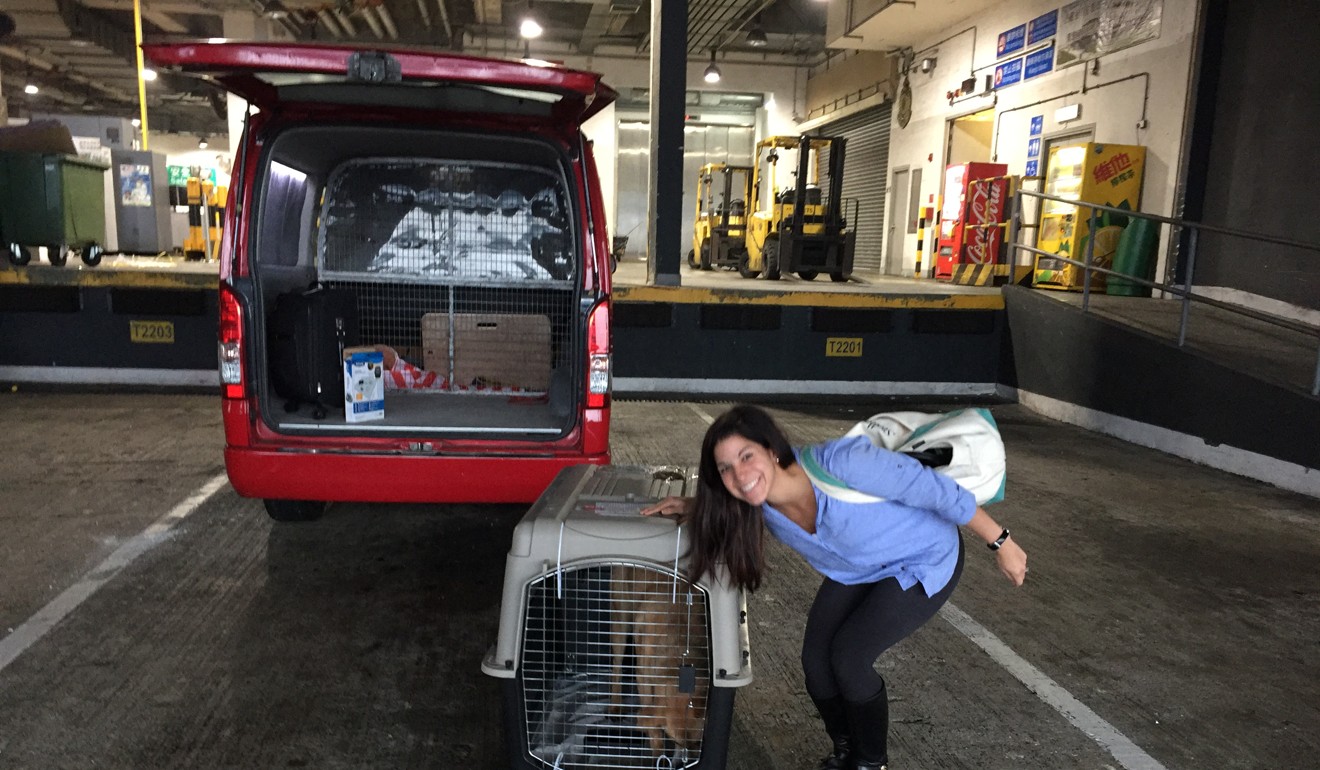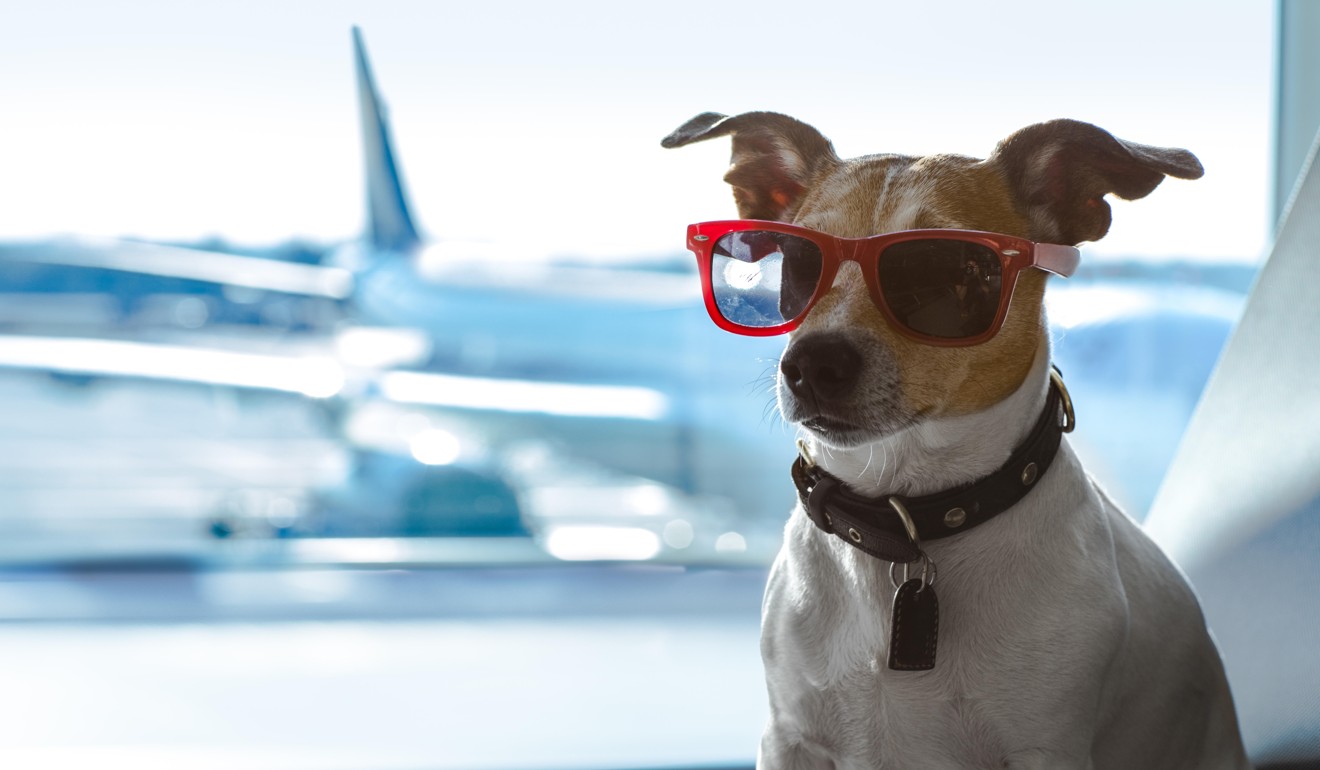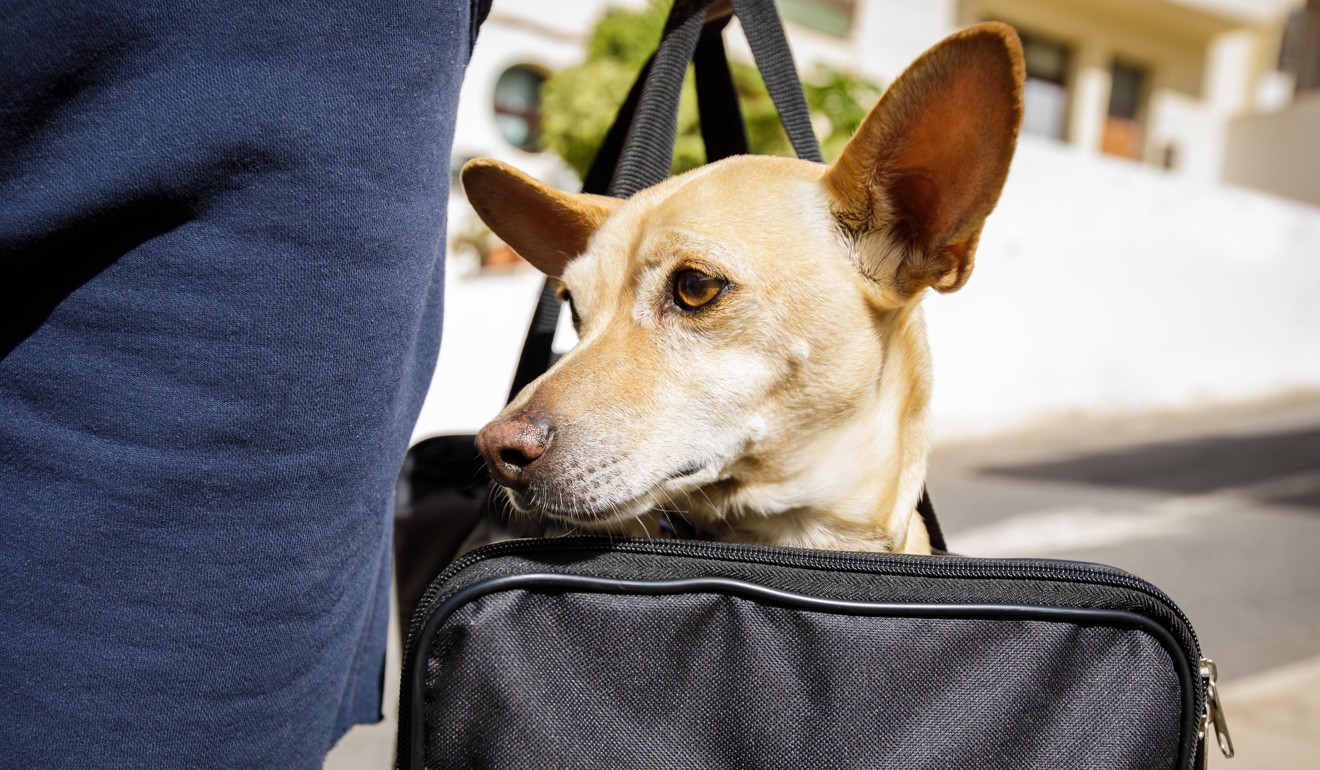
Pet relocation: what Hongkongers need to know about flights, health checks and more, plus six dos and don’ts
Dog owners tell us their experiences of relocating them and experts advise on getting pets familiar with their travel crates, when to use an agent to arrange a relocation, and how to avoid bureaucratic headaches
In September 2015, an Air Canada pilot flying to Toronto landed his plane in Germany to save a French bulldog from freezing to death in the plane’s cargo hold after the heating system malfunctioned. The dog’s relieved owner said afterwards: “It’s my dog, it’s like my child. It’s everything to me.”
India’s luxury hotel for dogs has a swimming pool, spa and serves Belgian beer
It was a heart-warming story, but one that would have raised fears in any pet owner looking to relocate their beloved animal overseas. Such fears became a reality for one local dog owner in September this year, whose eight-year-old golden retriever died on a Cathay Pacific flight from Hong Kong before take-off, apparently after it escaped from its crate.
George Yung runs International Pet Travel, based in Lai Chi Kok, and has been helping people bring their pets into and out of Hong Kong for 20 years. He says the incident on the Cathay flight could have happened because the dog was not used to being in a crate.
“There was blood where the door was, because the dog was trying to bite out of the crate. It’s possible the dog had only been given a few days to get used to the crate, but usually when we ship dogs we give the crate to the owners at least a month before departure so they have time to become familiarised with it.”

That is useful to know because flying a beloved pet thousands of miles across the world is a nerve-wracking experience for almost any owner. Earlier this year, Stella McClellan moved from Hong Kong to the US state of Texas with her husband and their 10-month-old dog, Winston. The journey included a four-hour layover in Chicago.
“I was very stressed before we left, especially hearing stories where somehow the pet didn’t make it onto the plane,” McClellan says.
She flew with United, which is among airlines that have pet transportation programmes, and decided to save money by not using an agent, instead relying on United staff to answer her questions.

She says the total cost, including airfare, crate and handling fees, was about US$1,200 and overall the move went well, though there were two points on the journey that raised her pulse a notch.
“The day we showed up for the flight, no one at the cargo terminal spoke English. I started to panic a bit because I had no way to communicate, but luckily our Uber driver stayed with us the whole time and helped us to translate,” she says.
“The only thing that really upset me was when we landed and I discovered that no one had fed Winston during the layover as promised, so the poor puppy didn’t eat for over 24 hours.”

Yung says in his experience most major airlines that carry pets do a good job. What owners really need to look out for are countries’ rules and regulations surrounding pet relocation, as these differ from place to place.
Moving a dog to the US, for example, requires just a simple health certificate signed off by a registered vet – not even a blood test is required – and proof of a rabies vaccination (some states don’t even expect this). On the other end of the scale are Australia and Japan, which require more detailed health certificates, import permits, and rabies vaccinations and blood tests done at least 180 days before arrival. Australia requires further blood tests done 45 days before arrival, and imposes 10 days of quarantine on dogs entering the country.
“For people going to Australia and Japan, if they don’t get the primary blood test done properly, they could make things very complicated for themselves later,” Yung says. “Both countries also need the pets to have their microchip inserted before they take the rabies test.”
Usually when we ship dogs we give the crate to the owners at least a month before departure so they have time to become familiarised with it
Health certificates can also be a stumbling block. Those issued by the EU, for example, are five pages long and require careful reading of multiple-choice questions. They also need to be endorsed in Hong Kong by the Agriculture, Fisheries and Conservation Department (AFCD).
“There’s a lot of information you need to put on an EU health certificate, but you also need to know which sections to cross out that aren’t applicable to your pet,” Yung says. “If you don’t cross out the right sections, the AFCD won’t sign it for you. I often have vets calling me up, saying they have an EU health certificate but they don’t know which parts to cross out.”
For certain countries, the AFCD insists on seeing the dog six months before the leaving date if the pet was born in Hong Kong without proper documentation (such as a breeder declaration or adoption paper from a registered charity). This is to caution against dog smuggling from China – the AFCD needs proof that the dog has been in Hong Kong for at least 180 days. This applies to dogs going to Australia, New Zealand, Singapore, Taiwan and Japan.
Breast cancer survivor says dogs were a lifesaver, and she is not alone – studies show many ways keeping pets is good for health
“So you have to physically take your dog to the AFCD so they can scan it for the microchip,” Yung says. “Six months later, you can leave Hong Kong. But some people, they want to go in three months – they can’t. It has caught quite a few of my clients out.”
Yung believes that owners looking to save money can in general move their pets to the US and Canada by themselves without the help of an agent. But because of other countries’ more complicated procedures regarding health certificates, import permits and quarantine, he says, it is usually better to get someone with experience involved. They’re better at dealing with the unexpected, too.
I did the best that I could do. I didn’t want to take any chances
“Just recently we arranged for the shipment of a British bulldog to India with Korean Air. All agreed, no problems,” Yung says. “Two days before the flight took off, the airline came back to us and said they’re not taking the dog because it has been recognised as an aggressive breed. I told them it’s not recognised as an aggressive dog, but they were insistent. They said we had to build a special wooden crate for it to exact specifications, which would have taken at least three weeks.
“I got their manager in Hong Kong to write to the headquarters to explain the situation, and that we didn’t accept getting only two days’ notice. They agreed to let us ship it in the end, but it was a real nightmare. Two days!”

McClellan says starting her research as soon as she found out she was going to move, and keeping a checklist of things that had to be done, were vital.
“United sent me an information pack with details on what they require for pets flying, and then I made sure to check those against the CDC [the US Centres for Disease Control and Prevention] website and regulations for bringing a dog in from overseas. I also have a friend in Hong Kong who is a veterinary technician, and she helped to double-check and verify that I had the checklist correct,” she says.
“I feel that at the time, I did the best that I could do. I didn’t want to take any chances that I wouldn’t be able to bring Winston back.”
Hong Kong’s first postmortems for pets on offer at new City University laboratory
Dos and don’ts for pet relocation
DO get your dog familiarised with its crate as soon as possible, preferably at least a month before departure.
DO find out how you can save on costs – for example, dogs weighing less than 23kg can travel to the US and EU as excess baggage (around HK$2,400 for a medium-sized dog) rather than manifest cargo (around HK$10,000 for a medium-sized dog). This also means the pet can be picked up from the passenger luggage conveyor rather than the cargo terminal.

DO understand that airlines have different regulations. Cathay Pacific, for example, will not fly any snub-nosed dogs such as pugs, shih-tzus and British bulldogs. Lufthansa will fly these dogs, but will not put one on the plane if the outside air temperature is above 26 degrees at the point of departure, transit or destination airport.
DON’T believe everything you read on the internet: according to Yung, there is a lot of erroneous information out there. (“One client told me they read that they could do home quarantine in Australia. There is no such thing,” Yung says.)
DON’T think that it costs the same to bring a pet in to Hong Kong as it does to take them out again. Exporting can be much more expensive.
‘I can communicate with dogs, cats and cockroaches’: Hong Kong pet whisperers’ confessions
DON’T expect flexibility from the AFCD. “In Singapore, if you did the blood test say 29 days, not 30 days, after the rabies blood test, they’ll sometimes let you off,” Yung says. “But in Hong Kong? No chance. They’re very strict.”

